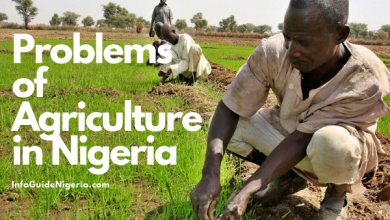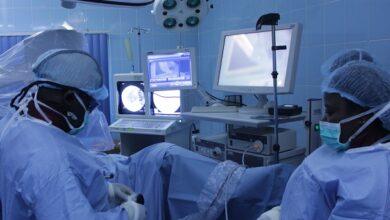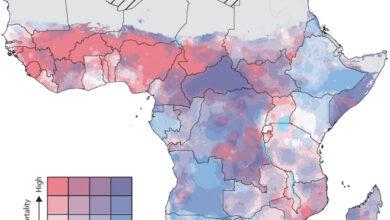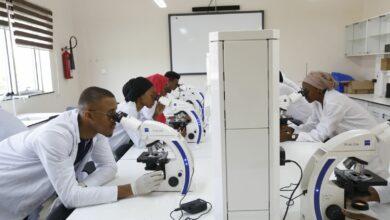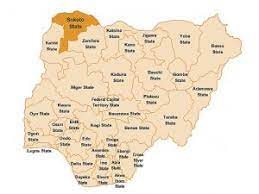
Top 15 States with high illiteracy rates in Nigeria
States with high illiteracy rates in Nigeria – With a population of over 200 million people, Nigeria is Africa’s most populous country and home to hundreds of ethnic groups and languages. However, literacy remains a significant challenge, with UNESCO estimating an adult literacy rate of only 62% as of 2018. While universal primary education is mandated by law, enrollment and attendance rates remain low in many parts of the country.InformationGuideNigeria
Illiteracy impacts all facets of life, from healthcare to employment opportunities to civic participation. It disproportionately affects women and girls and those in rural communities. Tackling illiteracy is thus critical for Nigeria to tap into its vast human capital potential and drive socioeconomic growth.
👉 Relocate to Canada Today!
Live, Study and Work in Canada. No Payment is Required! Hurry Now click here to Apply >> Immigrate to CanadaTo understand where literacy efforts should be focused, examining the states with the highest illiteracy rates is useful. In this article, we will discuss the top 15 states in Nigeria with high illiteracy rates.
Top 15 States with high illiteracy rates in Nigeria
Here are the top 15 states in Nigeria with high illiteracy:
1. Sokoto State
Located in the North West region, Sokoto has the highest illiteracy rate in Nigeria, with UNESCO estimating that only 15% of the population can read and write. Contributing factors include high poverty levels, early marriage for girls, and a sparse population spread out over vast rural areas. Islam is the predominant religion and cultural norms have historically emphasized Islamic education over Western-style schools. With over 80% of the population engaged in agriculture, there are few industries requiring formal education.
Read Also: Top 15 States with High Poverty Rates in Nigeria
2. Bauchi State
Bauchi has the second-highest illiteracy rate, with UNESCO putting the figure at 26%. It is located in the North East region, which has been gravely impacted by the Boko Haram insurgency in recent years, disrupting education for many. Most inhabitants are Muslim and poverty levels are high, especially in rural areas. Subsistence agriculture is the main livelihood. Lack of funding and neglect of the education sector over decades has led to poor education outcomes.Top 15 States with high illiteracy rates in Nigeria
3. Katsina State
Katsina is next with a 28% literacy rate. Located in the North West zone, it is predominantly Muslim and rural. 80% of the population engages in agriculture and livestock rearing. Early marriage for girls is very common. Though primary education enrollment has improved, attendance and quality of education remain deficient. Teacher absenteeism has plagued rural schools. Cultural norms have not emphasized education for girls until recently.
4. Zamfara State
This North West state has suffered from years of insecurity due to banditry, severely disrupting education and economic activities. Poverty levels are very high with minimal industrialization. Infrastructure like roads and electricity is inadequate, hampering access to schools. The nomadic lifestyle of many inhabitants also makes it difficult to enforce compulsory education. Just 29% of Zamfara’s population can read and write.
Read Also: Top 15 States with Pure Drinking Water in Nigeria
👉 Relocate to Canada Today!
Live, Study and Work in Canada. No Payment is Required! Hurry Now click here to Apply >> Immigrate to Canada5. Jigawa State
Jigawa is located in the North West and shares borders with Niger Republic. Infrastructure development is lacking and poverty is endemic, especially in rural areas where most residents rely on subsistence farming. Government funding for education has been low. Early marriage for girls leads to high dropout rates. Only around 30% of adults are literate.14 Best Female Coaches of all Time
6. Yobe State
Yobe has suffered greatly due to Boko Haram’s insurgency in North East Nigeria. Schools have been often attacked and destroyed over the past decade. This insecurity has disrupted education for an entire generation of children. Poverty and lack of infrastructure like electricity further hamper literacy efforts. UNESCO puts Yobe’s literacy rate at 31%.
7. Kebbi State
Kebbi has a literacy rate of 32%, according to UNESCO statistics. Located in the North West, 80% of the state’s population lives in remote rural areas. Poverty is widespread with minimal industrial presence. Low school enrollment and early marriage for girls impact education. The lack of qualified teachers also undermines literacy programs. Government funding for education is quite low.15 Best Home Remedies in Nigeria
8. Niger State
Located in North Central Nigeria, Niger has remote rural communities, high poverty levels, and deficiencies in education infrastructure that have contributed to a 33% literacy rate. Lack of roads, electricity, and resources for schools hamper efforts to boost enrollment and quality of education. Government investment in education has also been historically low.
Read Also: Top 15 States for Medical Innovation in Nigeria
9. Gombe State
Gombe’s literacy rate stands at 34%. Located in the North East, which has been plagued by insurgency, years of political instability have disrupted education access. There is also a severe lack of qualified teachers. Poverty levels are quite high, especially in rural communities where infrastructure is poor. Parents often keep girls home to help with chores.105 Good Morning My Love Messages
10. Kaduna State
Kaduna has a literacy rate of 41% per UNESCO data. While the southern part of the state has higher school enrollment, the northern districts are sparsely populated with high poverty levels and more resistance to Western-style education. Rates of school attendance and completion are lower for girls. Inadequate funding for education and a shortage of qualified teachers further exacerbate literacy challenges.
11. Taraba State
Located in North East Nigeria along the border with Cameroon, Taraba has suffered from years of inter-communal conflicts that have disrupted education and economic activities. There are inadequate teaching staff and school facilities, especially in remote rural areas where most inhabitants reside. Early marriage for girls also impacts school completion. The literacy rate stands at 44%.200 Romantic Message for Her
12. Adamawa State
Adamawa’s literacy rate is only slightly better at 45%. Located in North East Nigeria, it has faced challenges from insurgency and communal clashes in recent years. Deep cultural norms that do not emphasize education for girls are another major impediment. The lack of Secondary schools in remote areas has been a key gap. With over 70% of the population engaged in agriculture, literacy has not been seen as necessary for livelihoods.
Read Also: Top 15 States for Oil and Gas Reserves in Nigeria
13. Kano State
Though Kano has some of the country’s oldest universities, its overall literacy rate is only 49% per UNESCO. The majority rural population has found formal education unnecessary for their agricultural and crafts livelihoods. Infrastructure deficiencies hamper school access and quality. The loss of irreplaceable ancient manuscripts to the Boko Haram attacks has also impacted education and literacy levels.NYSC Portal
14. Borno State
Borno has suffered immensely from over a decade of Boko Haram insurgency, severely disrupting economic activity and access to education. Schools have been targets of attacks. Teachers have fled conflict zones. With literacy at just 53%, the impact of the crisis will be felt for generations without concerted efforts. Social norms have also not emphasized women’s education until recently.
15. Plateau State
Plateau has pockets where literacy rates are comparable to other states in the South, but overall the literacy rate stands at just 54% according to UNESCO. Divisions along ethnic and religious lines, communal conflict, and high poverty levels have all impacted education access over the past decades. Many remote rural areas lack secondary schools. Lack of roads and transportation hampers access.JAMB Portal
Read Also: Top 15 States with Low Healthcare Costs and High Value in Nigeria
Addressing Illiteracy
Some common threads stand out when examining these 15 Nigerian states with the highest illiteracy rates. Poverty, cultural norms that do not emphasize education, lack of infrastructure like schools and roads, high rates of early marriage for girls, and the impact of conflict and insecurity have all contributed to low literacy levels.
Going forward, clearly a multi-pronged approach will be needed to tackle this challenge:
- Government investment – Greater investment in education by state and federal governments is crucial. Funding is needed to build more schools, hire qualified teachers, provide learning materials, and improve curricula. Governments also need to address cultural norms around girls’ education.
- Infrastructure development – Building roads and electricity networks will facilitate access, especially in remote areas. Communication networks must also be improved.
- Engaging communities – Sensitizing parents and communities on the importance of education is key to increasing enrollment and attendance. It helps tackle norms like early marriage.
- Alternative models – Creative solutions beyond traditional schools should be considered for hard-to-reach areas, like mobile schools or technology-enabled remote learning.
- Targeted programs – Literacy programs focused specifically on women and girls can help close the gender gap. Programs in local languages may be needed for some communities.
- Private sector support – Businesses and NGOs should support government literacy efforts through funding programs and public advocacy. Public-private partnerships can expedite solutions.
Conclusion
With concerted efforts, Nigeria can make strides against illiteracy. Education and literacy are vital for individual socioeconomic upliftment as well as for national development. Addressing the needs of the most educationally disadvantaged states can set Nigeria on a more positive trajectory. Tackling the illiteracy challenge is a shared responsibility of government, civil society, communities, families, and development partners.
Check: JAMB Result
Check and Confirm: How Much is Dollar to Naira




